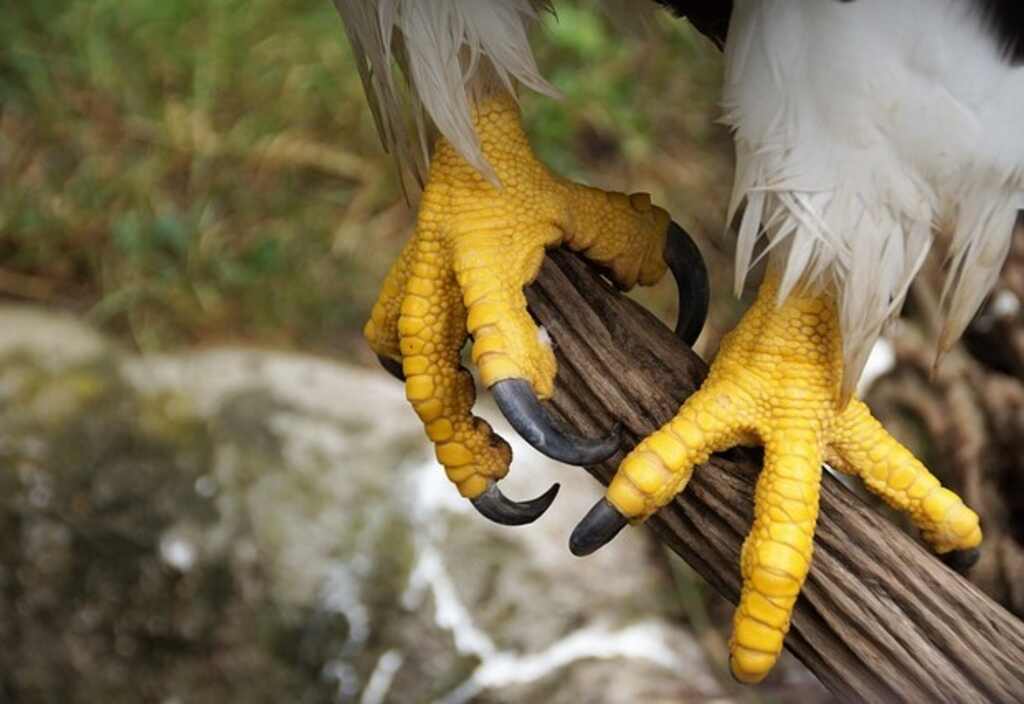When we think of eagles, we often picture their sharp talons – the powerful weapons that enable them to catch and hold onto prey. But which eagle species has the longest talons?
In this article, we will explore the record-holding eagle species and discuss the physical and behavioral adaptations that make them such effective hunters.
What eagle has the longest talons? The answer might surprise you. While the bald eagle is perhaps the most famous eagle species, it is not the record-holder when it comes to talon length.
Instead, the honor goes to the harpy eagle, a massive bird of prey found in the forests of Central and South America.
But other eagle species, such as the golden eagle and African crowned eagle, also have impressive talons that are perfectly suited to their hunting needs.
Table of Contents
- 1 Key Takeaways
- 2 What Eagle Has the Longest Talons
- 3 Anatomy of Eagle Talons
- 4 The Hunting Techniques of Eagles
- 5 Bald Eagles: The North American Record-Holder
- 6 Harpy Eagles: The South American Record-Holder
- 7 Golden Eagles: The Old World Record-Holder
- 8 Other Eagle Species with Impressive Talons
- 9 Eagle Talons in Culture and Mythology
- 10 Conservation of Eagle Species
- 11 Conclusion
- 12 FAQ: What Else Should I Know About Eagle Talons?
- 12.1 What is the average size of an eagle’s talons?
- 12.2 How strong are eagle talons?
- 12.3 Do all eagle species use their talons to hunt?
- 12.4 What is an eagle’s hunting success rate?
- 12.5 Do eagle talons grow back if they are injured?
- 12.6 Are eagle talons used for anything besides hunting?
- 12.7 Can eagle talons be dangerous to humans?
- 13 Author
Key Takeaways
- The Philippine eagle, also called the monkey-eating eagle, has the longest talons among eagles.
- Its talons can grow up to 4 inches (10 centimeters) in length.
- The long talons enable the Philippine eagle to hunt and grasp its prey with great precision.
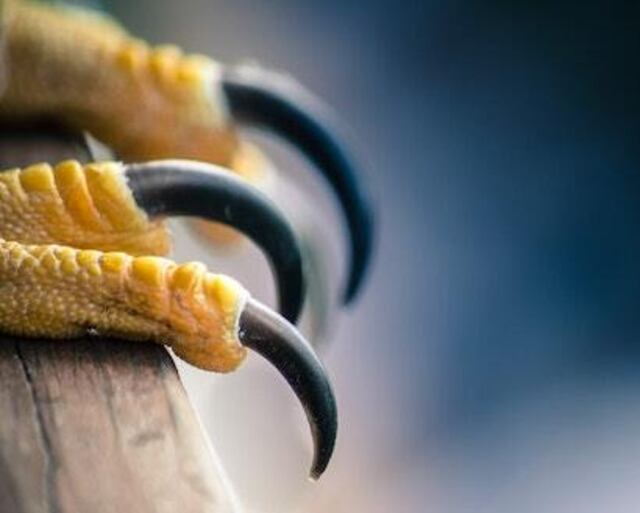
What Eagle Has the Longest Talons
The Philippine eagle (Pithecophaga jefferyi) possesses the longest talons among eagles. This magnificent bird of prey, also known as the monkey-eating eagle, is native to the Philippines.
Its talons can reach up to 4 inches (10 centimeters) in length, which it uses for hunting and grasping its prey with exceptional precision.
Anatomy of Eagle Talons
Eagle talons are a crucial part of their hunting arsenal. These sharp, curved claws are powerful tools that allow eagles to grab and hold onto prey.
The size of eagle talons varies among species, with some having longer, sharper and thicker talons than others.
The curvature of the talons also differs between species, with some having more curved talons that are better suited for grasping prey.
The strength of eagle talons is impressive, with some species having a grip strength of up to 400 pounds per square inch.
The talons are also covered in razor-sharp scales and can cause serious damage to prey or potential predators.
These physical characteristics are adapted to the hunting style of each eagle species.
For example, the harpy eagle, with its longer and thicker talons, is better suited for hunting larger prey such as monkeys and sloths. The bald eagle, with its more curved talons, is better adapted for catching fish.
The Role of Talons in Hunting
Eagle talons play a crucial role in hunting. The sharp, curved claws allow eagles to grab and hold onto prey, preventing it from escaping. The strength of the talons also enables eagles to kill their prey quickly and efficiently.
When hunting, eagles will silently soar over their prey before diving down to grab it with their talons. The impact of the dive is often enough to stun or kill the prey, allowing the eagle to carry it away.
The talons are also used for defense. If threatened, eagles will use their talons to protect themselves and their young.
The Hunting Techniques of Eagles
Eagles are fierce and skilled hunters, with a variety of hunting techniques that help them catch prey.
One of the most common hunting techniques used by eagles is soaring or circling in the air, scanning the landscape below for potential prey.
Once they spot a target, they will fold their wings and dive towards it at high speed, using their powerful talons to grab and kill the prey.
Eagles may also hunt by perching on trees or other high vantage points, waiting for prey to come within range. They will then fly towards the prey, often surprising them with their sudden attack.
Another hunting technique used by eagles is piracy – stealing food from other birds or animals. Eagles may chase other birds in flight, forcing them to drop their prey, which the eagle will then catch.
When it comes to prey selection, eagles are opportunistic hunters and will prey on a wide variety of animals depending on their size and availability.
Larger eagles, such as the harpy and Steller’s sea eagle, may hunt larger prey such as monkeys, sloths, and even small deer.
The hunting success rate of eagles varies depending on the species and individual skill.
Larger and more experienced eagles tend to have a higher success rate, while younger or less experienced eagles may have a lower success rate.
Bald Eagles: The North American Record-Holder
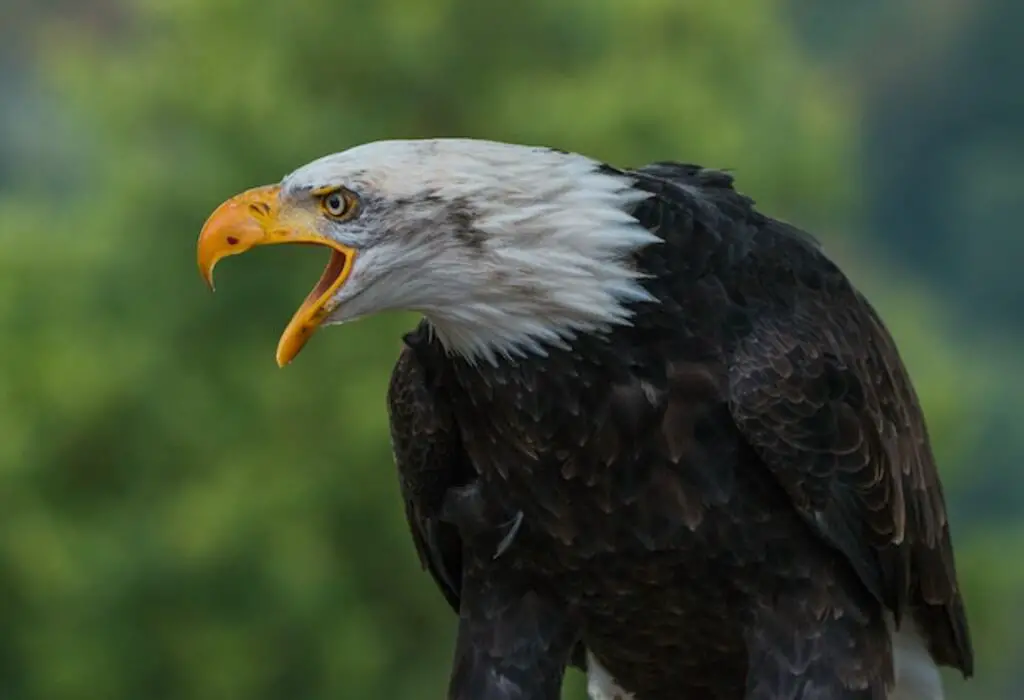
The bald eagle is perhaps the most iconic eagle species in North America, and it is also the species with the longest talons on this continent.
The bald eagle’s talons can be up to 2 inches long and are razor-sharp, allowing them to grasp and hold onto prey with incredible strength.
In addition to their impressive talons, bald eagles have a number of adaptations that make them formidable hunters.
For example, their keen eyesight allows them to spot prey from great distances, and their powerful wings enable them to fly at high speeds and maneuver with agility in the air.
Bald eagles are opportunistic hunters, meaning they will eat a wide variety of prey depending on what is available.
Some of their favorite foods include fish, waterfowl, and small mammals such as rabbits and squirrels. They are also known to scavenge for food, feeding on carrion and garbage when other sources are scarce.
Bald eagles are listed as a species of Least Concern by the International Union for Conservation of Nature (IUCN), which means their population is relatively stable.
However, they remain vulnerable to threats such as habitat loss, pollution, and poaching. Conservation efforts, such as habitat restoration and protection, are crucial for ensuring the survival of this magnificent species.
Harpy Eagles: The South American Record-Holder
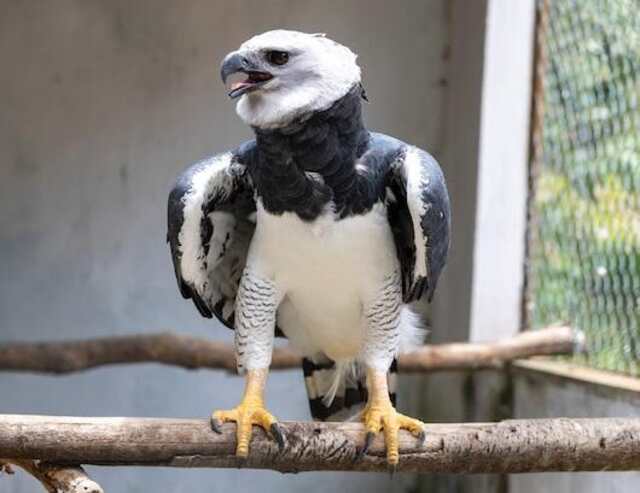
The harpy eagle is a formidable predator and the largest eagle species found in South America. They are known for their impressive size, strength, and powerful talons, which are the longest of any eagle species in South America.
Their talons can grow up to 5 inches in length, which is longer than a grizzly bear’s claws!
Harpy eagles are skilled hunters and their talons play a crucial role in capturing prey. They have a unique hunting style that involves ambushing their prey from above and grasping it with their talons.
Their talons are curved and sharp, allowing them to easily pierce the flesh of their prey and hold on tightly.
In addition to their impressive talons, harpy eagles have other adaptations that make them formidable predators.
They have strong legs and feet, which help them to perch on branches and walk along the ground. They also have excellent eyesight, which allows them to spot prey from great distances.
Harpy eagles are apex predators and sit at the top of the food chain in their habitat. They prey on a variety of animals, including monkeys, sloths, and other birds.
Due to their large size and impressive hunting skills, they have few natural predators.
However, they are threatened by habitat destruction and are listed as a near-threatened species by the International Union for Conservation of Nature (IUCN).
Harpy Eagle Hunting Techniques
Harpy eagles use a variety of hunting techniques to capture their prey. Their preferred method is to ambush their prey from above, swooping down and grabbing it with their talons.
They have been known to take prey as large as monkeys and sloths, which they carry away to their treetop nests to feed on.
Harpy eagles have also been observed hunting by stalking their prey on the ground, using their powerful feet to grab it and kill it.
They have even been known to hunt near water, where they will stand on the edge of a riverbank and use their talons to grab fish.
In addition to their hunting skills, harpy eagles are also known for their intelligence.
They are capable of learning and adapting to new situations, which allows them to be successful hunters in a variety of environments.
Golden Eagles: The Old World Record-Holder
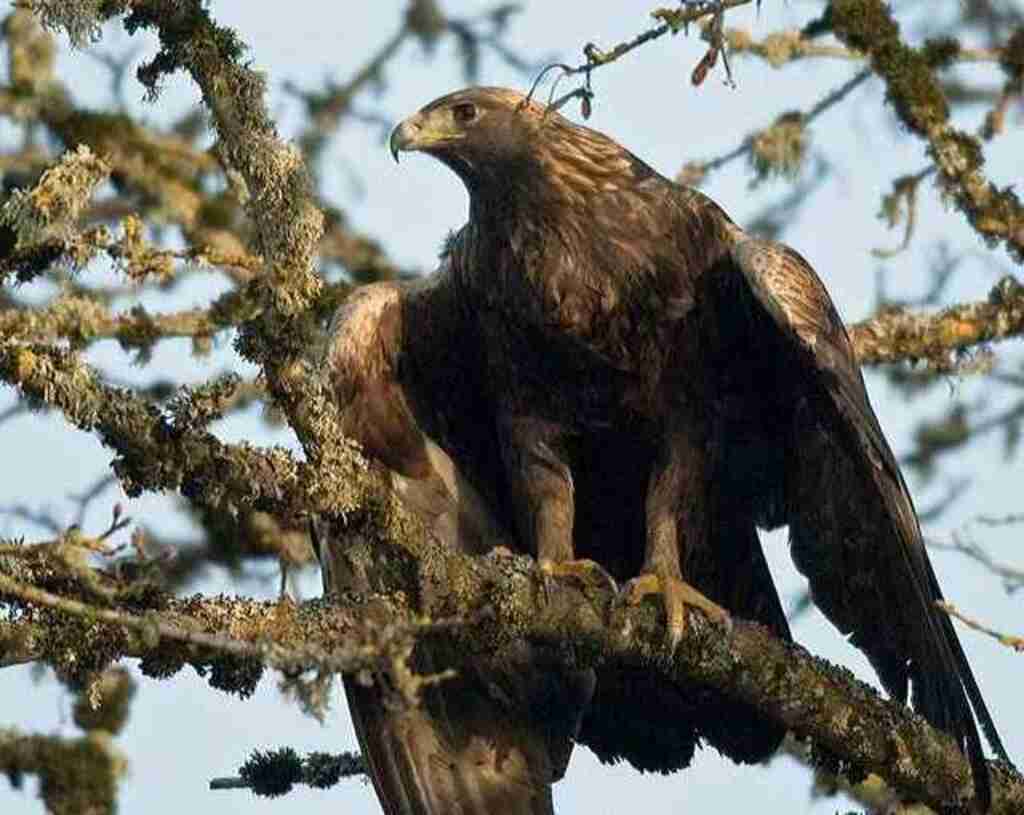
The golden eagle (Aquila chrysaetos) is a large bird of prey found across the Northern Hemisphere, from North America to Asia.
It is known for its impressive hunting skills and is considered one of the most agile and powerful eagles in the world.
The golden eagle has long, strong talons that are well-suited for hunting a variety of prey.
Their talons have been known to exert a force of up to 400 pounds per square inch, allowing them to catch and kill animals much larger than themselves.
These talons are also curved and sharpened, making them ideal for catching and holding onto prey.
The curved nature of the talons also allows the eagle to maintain a secure grip while flying or landing, further increasing their hunting success rate.
Golden Eagle Hunting Techniques
Golden eagles are known for their unique hunting style, which often involves an aerial attack from above.
They use their impressive eyesight to locate prey from high in the air and then swoop down to catch it quickly and efficiently.
These eagles are opportunistic hunters and will prey on a wide variety of animals, from rabbits and hares to mountain goats and deer.
They are also known to hunt other birds, including other raptors such as falcons and smaller eagles.
Golden eagles are capable of hunting alone or in pairs, and their hunting success rate varies depending on the prey and the individual eagle’s skill level.
Overall, however, they are highly successful hunters, with an estimated success rate of around 30%.
Golden Eagle Adaptations
The golden eagle has many adaptations that help it survive and thrive in its environment. In addition to their impressive talons, they have keen eyesight that allows them to spot prey from up to two miles away.
Golden eagles are also built for speed and agility. They can fly at speeds of up to 200 miles per hour and are able to dive at incredible speeds to catch their prey.
These eagles also have strong, muscular legs that allow them to carry heavy prey back to their nests or feeding sites. They are also able to use their wings to help them carry and maneuver their prey while in flight.
The golden eagle is a truly remarkable bird of prey with impressive hunting skills and unique adaptations.
Its long, strong talons play a crucial role in its success as a hunter, allowing it to catch and kill a wide variety of prey.
Other Eagle Species with Impressive Talons
While bald eagles, harpy eagles, and golden eagles may be the most well-known species with impressive talons, there are several other eagle species that also possess formidable claws.
Let’s take a closer look at some of these impressive birds:
| Eagle Species | Talon Size | Adaptations | Hunting Techniques |
|---|---|---|---|
| Martial Eagle | 2-3 inches | Sharp claws for gripping prey, excellent eyesight | Perches on high vantage points and swoops down to catch prey, can take down animals as large as antelopes |
| African Crowned Eagle | 2-3 inches | Powerful claws for crushing skulls, excellent camouflage | Stalks prey from the treetops and attacks with a sudden burst of speed, known for taking down primates and small deer |
| Steller’s Sea Eagle | 2-3 inches | Strong talons for catching fish, thick feathers for insulation in cold environments | Perches near water and swoops down to catch fish, can also take down small mammals and birds |
| Philippine Eagle | 3-4 inches | Massive talons for catching monkeys and other large prey, unique feathers for camouflage | Perches high in the trees and swoops down to catch prey, known for taking down monkeys and flying lemurs |
| Bateleur Eagle | 2-3 inches | Flexible talons for grasping prey, excellent eyesight | Flies low over the ground to spot prey, can catch snakes, lizards, and small mammals |
| Crested Eagle | 2-3 inches | Sharp claws for grasping prey, powerful beak for tearing meat | Perches quietly and ambushes prey with a sudden attack, known for taking down monkeys and sloths |
As with all eagles, these species rely on their talons to catch and kill their prey. Their unique adaptations and hunting techniques allow them to survive and thrive in their respective environments.
However, many eagle species are considered threatened or endangered due to habitat destruction and poaching.
Conservation efforts are crucial to protect these remarkable birds and ensure their survival for future generations.
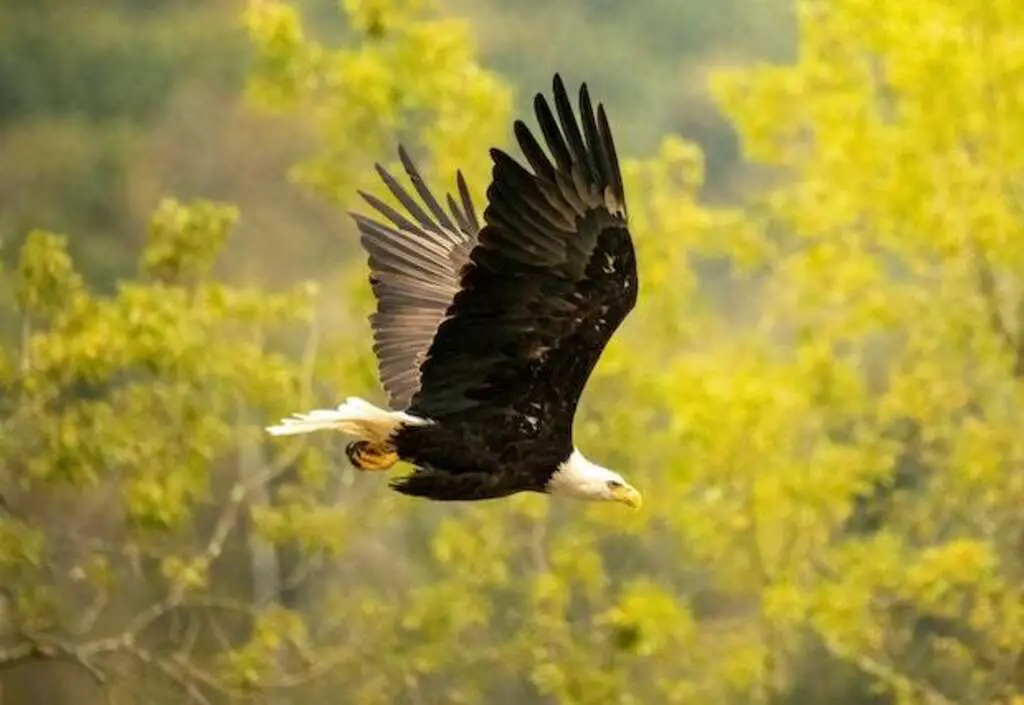
Eagle Talons in Culture and Mythology
Eagles with their impressive talons have been featured in various cultures and mythologies around the world. These majestic birds have captured the imagination of people for centuries, inspiring countless stories, symbols, and legends.
“The eagle has no fear of adversity. We need to be like the eagle and have a fearless spirit of a conqueror!” – Joyce Meyer
In Native American cultures, eagles are considered sacred animals and are often seen as symbols of strength, courage, and freedom.
The bald eagle, the emblem of the United States, is revered by many Native American tribes and is often featured in their art and ceremonies.
In ancient Greek mythology, the eagle was associated with Zeus, the king of the gods. It was believed that Zeus would often transform himself into an eagle to carry out his deeds.
The eagle was also a symbol of victory and was often depicted in the helmets and shields of Greek warriors.
In Norse mythology, the eagle was a symbol of wisdom and was often associated with Odin, the god of wisdom and war.
Odin was said to have two eagles that would help him keep watch over the world from their perch in the branches of the World Tree.
Eagle talons have also been used in traditional medicine and spiritual practices around the world.
In China, eagle talons are believed to have healing properties and are used in traditional acupuncture treatments.
In some African cultures, eagle talons are used in spiritual healing ceremonies to ward off evil spirits and protect against negative energy.
Overall, eagle talons have played an important role in human culture and mythology throughout history.
Their impressive size and strength have made them symbols of power, courage, and wisdom in many different cultures around the world.
Conservation of Eagle Species
Eagles are some of the most majestic birds on the planet, but many populations are facing threats to their survival.
Habitat destruction and poaching are two of the biggest threats to eagle populations around the world.
As human populations continue to grow and expand into once-pristine wilderness areas, eagles are losing their habitats and finding it increasingly difficult to find food.
Poachers also pose a significant threat, as eagle parts and feathers are highly valued in some cultures and can fetch high prices on the black market.
Conservation efforts are vital to protecting eagle species from extinction.
Many organizations around the world are working to protect eagle habitats and to educate the public about the importance of conservation.
These efforts include protecting habitats, monitoring eagle populations, and working with local communities to develop sustainable hunting and fishing practices that do not harm eagle populations.
Some organizations also work to rehabilitate injured eagles and release them back into the wild.
Threatened Eagle Species
Several eagle species are currently listed as threatened or endangered due to habitat destruction and other threats. These include:
| Eagle Species | Threat Level |
|---|---|
| Philippine eagle | Critically endangered |
| Harpy eagle | Near threatened |
| Bateleur eagle | Near threatened |
| African crowned eagle | Near threatened |
These eagle species are all facing significant threats to their survival, and conservation efforts are needed to prevent them from becoming extinct.
How to Help
If you are interested in helping to protect eagle species, there are several things you can do. You can support conservation organizations that work to protect eagle habitats and to educate the public about the importance of conservation.
You can also make changes in your own life to reduce your impact on the environment, such as reducing your use of single-use plastics, conserving water, and using public transportation or carpooling whenever possible.
You can also support sustainable hunting and fishing practices and work to raise awareness about the importance of protecting wildlife habitats.
“The eagle has no fear of adversity. We need to be like the eagle and have a fearless spirit of a conqueror!” – Joyce Meyer
Conclusion
Among the various eagle species, the Philippine eagle stands out for having the longest talons. These remarkable talons, measuring up to 4 inches in length, equip the bird with the perfect tools for hunting and securing its prey, reflecting the awe-inspiring adaptations of this majestic raptor in its native Philippine habitat.

FAQ: What Else Should I Know About Eagle Talons?
Here are some frequently asked questions about eagle talons:
What is the average size of an eagle’s talons?
The size of an eagle’s talons can vary depending on the species, but they can range from 2 to 4 inches in length. The largest species, such as the harpy eagle, can have talons up to 5 inches long.
How strong are eagle talons?
Eagle talons are extremely strong and can exert a crushing force of up to 500 pounds per square inch. This allows them to easily grip and immobilize prey.
Do all eagle species use their talons to hunt?
Yes, all eagle species use their talons to hunt and kill prey. The talons are their primary weapon and tool for catching and killing prey.
What is an eagle’s hunting success rate?
The hunting success rate of eagles varies depending on the species and the availability of prey. Some species, such as the bald eagle, have a success rate of around 25%, while others, such as the African crowned eagle, have a success rate of over 60%.
Do eagle talons grow back if they are injured?
Yes, eagle talons can grow back if they are injured or lost. However, it may take several months for a new talon to fully grow.
Are eagle talons used for anything besides hunting?
Eagle talons have been used for various purposes throughout history, such as in traditional medicine, jewelry, and even as weapons. However, it is now illegal to possess eagle talons in many countries due to conservation efforts to protect eagle populations.
Can eagle talons be dangerous to humans?
While eagle talons are designed for hunting and killing prey, they are usually not a threat to humans unless provoked or threatened. It is important to give wild eagles their space and not approach them or their nesting areas.

